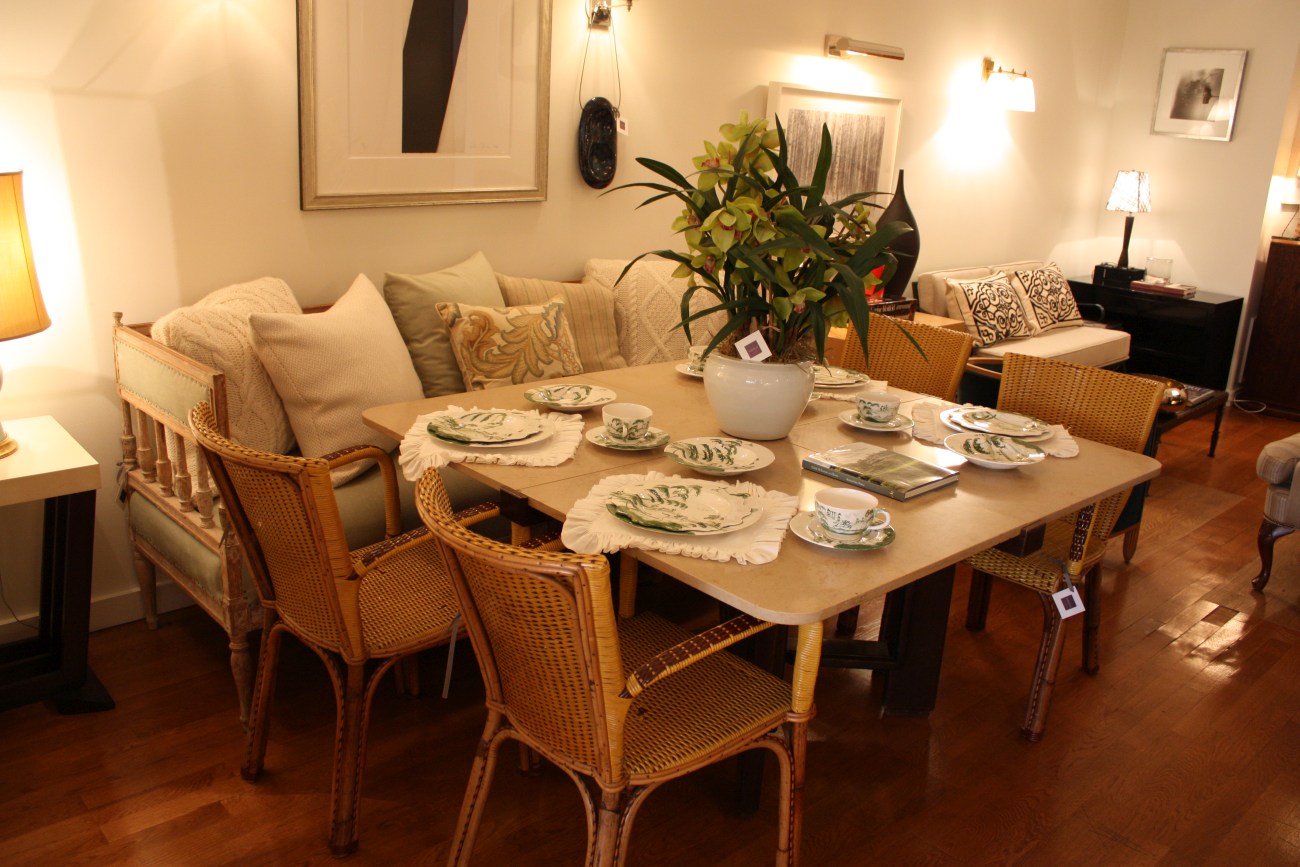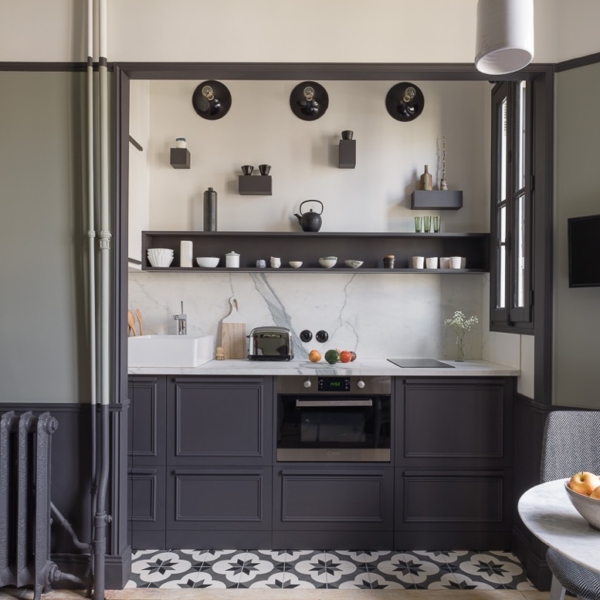Creating a dining room that reflects good taste and refinement necessitates a careful selection of elements that captivate the senses and evoke an air of elegance.
The pursuit of making a dining room appear more expensive is more than just an exercise in ostentation; it is a quest to create a space that provides a suitable setting for the people who use it and an artistic endeavor to create an atmosphere that exudes taste, style, and a love of the finer things in life.
Designing an elegant dining room requires a careful balance of textures, lighting, color, and other design elements that work together to create a cohesive look. Using these ideas, you can create a dining room with a timeless and sophisticated allure.
The key to making a dining room look more expensive is not always to spend more money; rather, it is to reinvent the room with items you already have and to make thoughtful and intentional choices that improve the room’s appearance and atmosphere.
Statement Light Fixture

If there is one area where the lighting is particularly noticeable, it is over the dining table. The lighting in a dining room goes beyond mere functionality and can become a focal point that can capture the attention of the room. The right light fixture has the power to elevate the ambience, create drama, and accentuate the design aesthetic of the room.
Consider installing a chandelier or pendant light above the dining table. Choose a fixture that complements the room’s style, such as a modern crystal chandelier or a vintage pendant light. The diameter of a central chandelier or pendant should be approximately one foot less than the width of a rectangular dining table to ensure that guests don’t hit it as they sit down. Hang the chandelier between 30 and 36 inches above the dining table.
Mix Dining Chairs

Mixing dining chairs is a simple way to give your dining room a personalized look, and you can do so in a variety of ways. One of the most basic ways to achieve this look is to select a distinct style for only the end chairs. While the end chair style may be larger than the side chairs, all chairs should be the same height to keep diners at roughly the same level.
You can also mix dining chairs, but keep them cohesive by material, style, or color. This is a bolder look, but it will set your dining room style apart. When you are mixing dining chairs, it is always important to keep the scale of the dining chairs in proportion to the size of the table. The chair sizes should complement the dining table rather than overwhelm it.
Elegant Window Treatments

Window treatments such as curtains, drapes, and shades can quickly change the look and feel of a dining room. Opt for curtains or drapes made from high quality fabrics like linen, silk, and velvet for the most elegant look. Even curtains made of thick cotton fabric will look stylish when hung in a simple panel style.
Floor-to-ceiling curtains make the room appear taller, particularly when hung above the window molding. Layer heavier curtains with sheer curtains to create a multidimensional effect. Inner sheers allow in natural light, maintain privacy, and reduce the need to disturb curtains by pulling them open and closed along the rod.
Layer Your Lighting

Dining rooms benefit from a cohesive lighting design that incorporates ambient, accent, and task lighting. In addition to a statement light fixture like a central chandelier or pendant light, you can add lights to lower levels of the room, such as table lamps on a console, wall sconces, or floor lamps in dark corners.
Make sure to add dimmers to light switches so you can control the amount of light output throughout the day. This allows you to easily adjust the mood of the lighting based on the activity in the room, be it a family game night or an intimate dinner with friends.
Artwork and Decor

Choose the artwork and decor in the dining room with care, as you just need a few pieces to make a strong visual impact. Whether your style is contemporary, modern, eclectic, rustic, or minimalist, the art and decor you use should reflect your personality and preferences.
Large pieces of artwork or wall decor look lavish and elevate the style of the dining room more than multiple small pieces, unless they are part of a cohesive group. Choose one or two places where you can establish a focal point for the room. This might be on the largest wall or a wall area above a console.
Rug

Many people have mixed feelings about rugs in the dining room, but regardless of their utility, rugs do add texture, color, and softness to a room. One of the key factors in choosing an appropriate dining room rug is that it should be the right size for the dining table and all the chairs. A good rule of thumb is for the rug to be at least 18-24 inches larger than the dining table on all sides. This will provide enough space to pull out the dining chairs while keeping them on the rug.
The rug pile is another important consideration when selecting a dining room rug. Choosing a rug with a low or no pile weave is easier to keep clean than a high pile rug that can trap food and debris. If you have a busy or young family but still want to invest in a dining room rug, consider an easy-to-clean option like those made from synthetic materials like polypropylene.
Dress the Table

Dressing the table in the context of everyday life means adding just a few items to the table that you can leave out that help the room feel pulled together and ready to be seen at all times. This could just be a simple linen table runner with a center arrangement. The best centerpieces are large pieces like stone vases, a wooden fruit bowl, or an earthenware pot. You can also add just a vase of long-lasting cut greenery for a more vibrant center display.
Add Wall Texture

Many formal dining rooms are set apart from the rest of the room; take advantage of this isolation by creating color and interest on the dining room walls. There are numerous ways to do this, including using wallpaper and wall molding, such as wainscoting, to dress the walls.
Wallpaper comes in a wide range of patterns, from English cottage-inspired designs to coastal seagrass textures. There are even peel-and-stick options that are more convenient to apply and remove than traditional paste varieties. Wall paneling instantly gives a room a more custom and established look. Raised panels, picture frames, shiplap, and beadboard wall paneling styles add texture to plain drywall surfaces.
Use a Sideboard or Credenza

While the table and chairs should be the focal points of the dining room, the sideboard, or credenza, plays an important supporting role. The sideboard is not only an excellent way to anchor wall art, but it can also be used for storage and food service when hosting large parties. When it is not being put to more practical use, you can use it to display collections of dishes, candles, or decorative accessories.
Choose a sideboard that enhances the dining room’s aesthetic. Painted or stained wood sideboards complement a variety of dining room styles. There are also stone, metal, acrylic, and mirrored designs available to complement more particular interior styles.
Sideboards with heat-resistant stone tops, such as marble or soapstone, add to the piece’s longevity and ease of maintenance. It is also critical to consider your storage requirements before selecting a sideboard. Sideboards and credenzas include a variety of drawers, shelves, and cabinets. Determine what you want to store inside your sideboard, and then choose a size and style that meets your storage needs.


